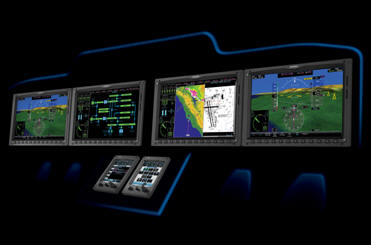|
|||||||||||||||||
|
|
|
|||
|
Garmin Enters The
Medium Lift Helicopter Market With G5000H By Shane Nolan |
||||
 |
February 13, 2012 - Garmin the global leader in satellite navigation, announced the G5000H, an integrated flight deck specifically designed for twin turbine, medium lift helicopters.
The G5000H combines widescreen displays with touchscreen
controls to bring leading edge technology, safety
enhancements and reliability to this class of
helicopters. “We are able to leverage our many years of experience providing quality and reliable situational awareness capabilities like synthetic vision, terrain alerting and datalink weather, to design a system that specifically supports the unique needs and challenges of the helicopter operating environment,” said Carl Wolf, Garmin’s vice president of aviation sales and marketing. |
|||
|
“With HSVT
and HTAWS plus innovative tools like touchscreen control,
Telligence™ voice command and 3D audio, the G5000H promises to
reduce workload and enhance the safety of each mission.”
The G5000H
features high resolution, wide aspect ratio primary flight
displays (PFD) and multi-function displays (MFD). The system
supports multiple display sizes and is scalable to support a
large number of display and touchscreen controller
configurations.
The
landscape oriented displays have multi-pane capability that
allows multiple pages to be viewed side-by-side on any of the
displays. Therefore, pilots can simultaneously view their
primary flight display, maps, charts, checklists and system
synoptics, HTAWS, TCAS, flight planning, weather or video input
pages. The touchscreen helicopter management system gives pilots rapid access to the flight information they want. It also has the ability to control a variety of operations within the cockpit such as flight management system functions, lighting, environmental controls, electrical power distribution and hydraulic systems. It has a menu-driven interface with intuitive icons, audio and visual feedback, and animation so pilots know exactly how the system is responding to their input, and the growth-oriented architecture allows for future technologies to be accommodated via software updates. |
||||


